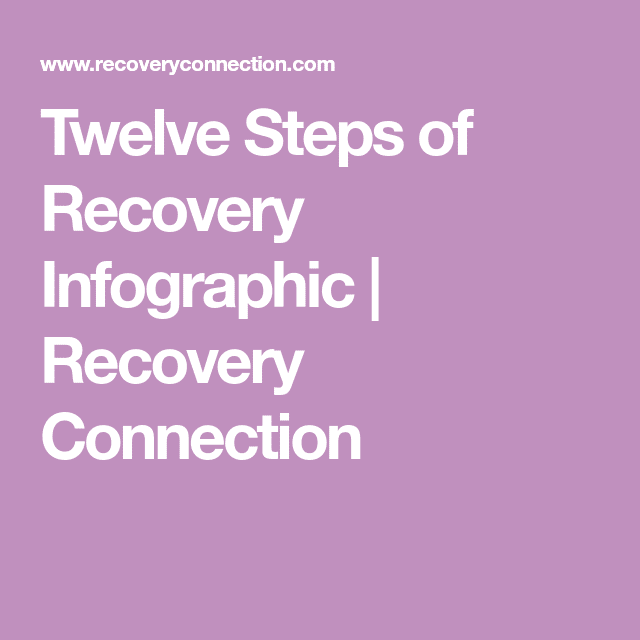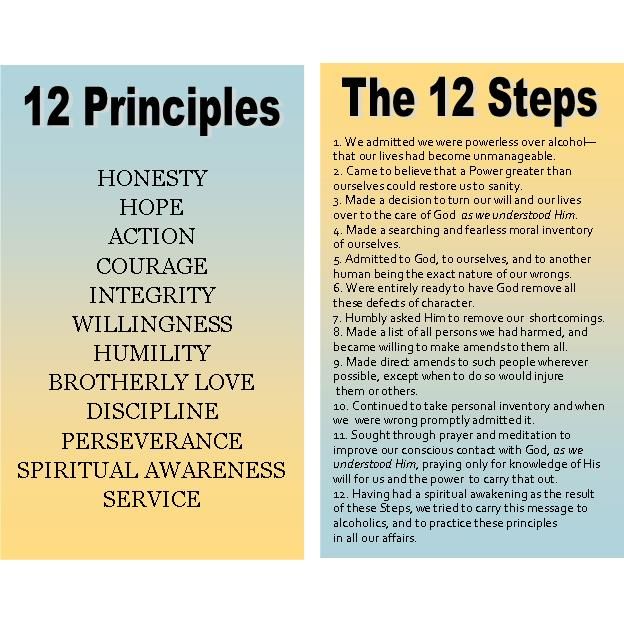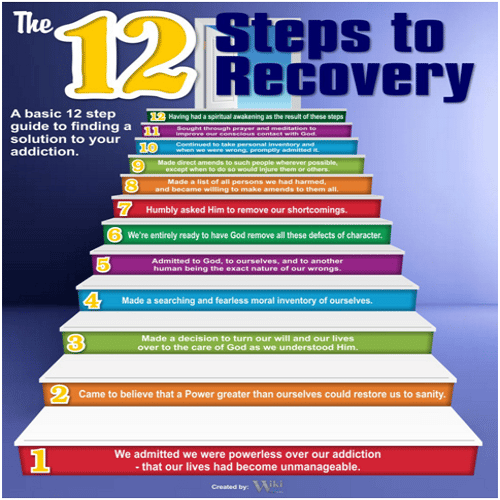How To Choose A 12
If you are considering a 12-Step approach to your recovery, there are several factors to consider. If you are stepping down from formal treatment, it may be helpful to speak with your treatment team about what types of mutual support groups may be most useful. The following sections discuss factors to consider when choosing a 12-Step program.
Barriers To Attendance And Engagement
Despite the benefit that can be derived from attending meetings and engaging in 12-Step activities, many individuals with SUDs are reluctant to do so. A number of real or perceived barriers contribute to high attrition and low or inconsistent participation rates. Some of the prominent barriers are listed in Table 2.
What Is The 12
The 12-Step program, first developed and used by Alcoholics Anonymous, is a 12-step plan in order to overcome addictions and compulsions. The basic premise of this model is that people can help one another achieve and maintain abstinence from substances of abuse, but that healing cannot come about unless people with addictions surrender to a higher power. This higher power doesnt need to be a traditional Christian version of God it can be as simple as the community of the 12-step meetings, the universe, or a different version of a higher power fit for your type of spirituality.
The 12-Step movement can be a powerful and helpful force for many people, but some people struggle with what they interpret as a strong religious element of the program. Many addiction treatment programs offer alternatives to 12-Step methodology for those who prefer a more secular foundation for treatment.
American Addiction Centers is in-network with many insurance companies, and your addiction treatment can be free depending on your policy. Find out if you are covered below.
Read Also: How Do You Know If Someone Is Addicted To Xanax
What Are The 12 Steps Of Addiction Recovery
The 12 steps of addiction recovery are a set of guidelines that provide a framework for recovery from addiction. These steps have been proven to be effective in helping people overcome addiction and live a life of sobriety. Prairie Recovery offers a 12-step addiction treatment program that can help you to overcome addiction and get on the road to recovery. Call us at to learn more.
Aftercare Programs As Part Of The Stages Of Recovery From Addiction

When a person has been through detox and rehab, they are not cured from their addiction. Addiction is a chronic disease which needs constant attention. One way to help stay sober is to follow through with the steps for addiction recovery by taking part in an aftercare program. One of the largest and oldest support groups and addiction aftercare programs is Alcoholics Anonymous . AA, as well as NA, Narcotics Anonymous help addicts and alcoholics keep on track with their recovery through meetings, counseling, and personal support structures for members.
Recommended Reading: Can You Get Addicted To Lorazepam
Recommended Reading: How Many Addiction Treatment Centers Are There In The Us
Changing How You Talk About Drug Use
The language you use has a direct and deep impact on people around you. You can reduce stigma by changing the words you use to talk about drug use. Using kind words can make it easier for someone to speak up, to feel understood or to receive help.
You can:
- use person-first language, for example say ‘person who uses drugs’ instead of ‘drug user’
- use neutral, medically accurate words when describing drug use
- avoid slang such as “addict” and “junkie”
- use language that shows care and concern, rather than judgement
- speak up when you hear someone being treated or talked to in a disrespectful way
- use language that acknowledges and promotes the fact that recovery from addiction is possible, and looks different for everyone
Provincial And Territorial Health And Support Services
| Resource | |
|---|---|
|
|
|
1-800-665-1822 |
|
| Resource | ||
|---|---|---|
| HealthLine |
|
8-1-1 |
|
List of pharmacies that carry naloxone |
| Resource | |
|---|---|
|
1-866-531-2600 |
|
1-866-797-0000 |
|
1-866-925-5454 |
| Resource | |
|---|---|
|
1-800-661-0844 |
Read Also: Can You Be Addicted To Food
Admitting That One Is Powerless Over Addiction
Addiction is a disease that alters brain chemistry and function, thus affecting reward, motivation, willpower, and memory. The first step asks people to accept that they are not able to control their substance abuse and that their motivation and willpower have been compromised.
Moreover, when a person battles addiction, they are no longer able to regulate how much or how often they use drugs and/or alcohol. Identification of this loss control and the admittance of powerlessness over addiction is typically the first step in recovery.
Read Also: How Many People Are Drug Addicts
Stigma Makes It Harder To Reach Out For Help
We can make it easier for people to get support by letting them know they are not alone, and that substance use does not define who they are. Addiction is a treatable medical condition, not a choice.
People who use drugs, especially those struggling with addiction face discrimination and barriers to getting help.
Stigma can:
- lead a person to avoid getting help because they are afraid of judgement or getting in trouble with work, their loved ones or even the law
- cause a person to hide their drug use or use drugs alone
- affect a person’s ability to find housing and jobs, which affects their health and quality of life
- contribute to people who use drugs receiving a lower quality of care from the healthcare system when they access services
You May Like: How To Stop An Addictive Personality
How Do Twelve Step Drug Rehab Programs Operate
Twelve-step facilitation is a commonly used rehabilitation process. How twelve-step drug rehab programs operate is generally the same throughout Canada. Twelve-step drug rehab programs rely on the support model as a means for helping addicts address daily challenges and obstacles that recovery brings. Ongoing abstinence is the goal, and 12-step drug rehab programs work to decrease relapse rates while reducing the need for formal drug treatment services for their members. Someone who has completed a 12-step drug rehab program continues to attend 12-step meetings daily, weekly, or monthly.
Twelve-step drug rehab programs provide a structured long-term maintenance approach to maintaining abstinence day-to-day. Programs offer goal-orientated directives, emotional support, enjoyable drug-free activities, positive role models with experience in recovery, and personal development training. The 12-step philosophy encompasses a set of principles designed to undo the negative effects of addiction. In addition, programs provide a framework for developing a drug-free lifestyle. The areas that are emphasized throughout treatment are individual growth and maturity, spiritual development, accepting the disease aspect of addiction, helping others, and avoiding self-centeredness.
Step 1 â We admitted we were powerless over alcohol â that our lives had become unmanageable.
Step 2 â Came to believe that a Power greater than ourselves could restore us to sanity.
Sponsorship In The 12
Your spiritual awakening can be religious in nature like Pastor Bill Wilson intended or more about aspiring for loftier goals and self-improvement as you lead others to the same place of sobriety that youve achieved by the end of the 12-step programme for addiction rehab. Regardless, you wont get far unless youre in the hands of a sponsor, which usually is a former member of the programme whos now volunteering to help out other addicts like him as part of his rehabilitation.
A sponsor in the context of 12-step programmes like Alcoholics Anonymous is a person under the recovery programme who guides the less-experienced aspirants or sponsee through the programmes multiple steps. Many affordable luxury rehab centres follow the same 12-step modus operandi of using graduates of the system as new sponsors for incoming students. New members are encouraged to develop relationships with experienced members as part of the programme.
Dont Miss: Can You Get Addicted To Smoking Paper
Recommended Reading: Therapy For Parents Of Addicts
Legal Vs Illegal Opioid
Legal opioids are prescribed by a health care professional most often to treat pain from conditions such as injuries, surgery, dental procedures, or long-term chronic pain.
Illegal opioids are any opioids that are made, shared or sold illegally. Illegal opioids include:
- street drugs from a drug dealer
- opioids given to you by someone who is not your health care provider
- opioids that are not prescribed to you but are taken from someone else
The 12 Steps With Other Treatments

According to the National Institute on Drug Abuses Principles of Drug Addiction Treatment: A Research-Based Guide, short-term residential programs developed the idea of using a modified 12-Step approach to provide a shorter stay in treatment that included follow-up through a 12-Step fellowship.9 This is seen as a way to provide the important post-treatment structure that helps people maintain long-term recovery. Other programs have also incorporated the 12 Steps, both by encouraging clients to attend 12-Step fellowship meetings, and by incorporating 12-Step ideas into their practices.
While 12-Step facilitation programs dont necessarily follow the steps, they promote the use of a 12-Step methodology, in the hope that clients will move to a 12-Step program after rehab to help maintain sobriety. In addition, certain treatment centers base their model for service around some of the ideas promoted through the 12-Step program. These centers can offer research-based services and promote a more scientific understanding of addiction treatment, but they incorporate some of the spiritual, psychological, and practical practices that the 12-Step program promotes. This results in an encompassing model of care designed to support clients through rehab and to give tools that they can use after treatment to maintain their recovery for the long-term.
Also Check: Addiction Services Council Cincinnati Oh
And Substance Abuse Counseling
At first getting sober feels amazing, but now you feel stuck. Its getting harder and you dont know why. You may wonder if sobriety is worth it because you’re frustrated and don’t know why. If you have a nagging feeling that something isn’t right…listen to it.
Learning to listen to your intuition is an important part of recovery.
Shutting off your feelings avoids the pain – for awhile. As a kid that helped you survive, but in recovery not feeling creates problems that lead to relapse.
Does The Program Specialize In Your Specific Addiction
There are several types of 12-Step programs to address different types of substance use and behavior patterns. There are also 12-Step groups to help support family and loved ones who are supporting a person struggling with addiction. Some people participate in one group, while others may choose to participate in multiple 12-Step programs to address other addictions or behaviors.
Some of the most common 12-Step programs include:
Don’t Miss: What Are The Effects Of Drug Addiction
Special Populationswho May Need More Or Different Help
A question of concern is whether certain subgroups or special populations benefit as fully, or in the same way, from participation in 12-Step support groups. For example, are women, youth, ethnic minorities, and those diagnosed with substance use and psychiatric disorders, apt to derive the same benefits from 12-Step participation as White, non-dually diagnosed male adults? A related question is whether special populations benefit equally from traditional 12-Step groups versus groups that are uniquely focused on their subgroup .
Looking For A Place To Start
Reach out to a treatment provider for free today.
Make a Call
Jeffrey Juergens
-
Jeffrey Juergens earned his Bachelors and Juris Doctor from the University of Florida. Jeffreys desire to help others led him to focus on economic and social development and policy making. After graduation, he decided to pursue his passion of writing and editing. Jeffreys mission is to educate and inform the public on addiction issues and help those in need of treatment find the best option for them.
Reviewed by Certified Addiction Professional: October 14, 2019
Dayna Smith-Slade
-
Dayna Smith Slade is the President and CEO of Substance Abuse Solutions, L.L.C., a unique and innovative substance abuse consulting firm based in Northern Virginia. Her Small, Women, and Minority owned firm is committed to increasing drug and alcohol awareness in the community and decreasing the prevalence and debilitating impact of substance abuse. Dayna is a seasoned counselor with experience in a variety of therapeutic milieus. She is a dynamic public speaker that has been the featured trainer at national conferences and the featured guest on local television and radio talk shows.
Reviewed by Doctor of Addiction Medicine: July 27, 2022
Dr. Ashish Bhatt, MD
Recommended Reading: How Long To Break Alcohol Addiction
What Are The Specific Steps
Descriptions of the specific steps are outlined below.
Whats The Difference Between The 12 Steps And 12 Traditions
The 12 step model is based on the experiences of two men, Bill Wilson and Dr. Bob, who, in the early 12th century, discovered that helping each other with their addictions were able to help themselves. Their discoveries led to the foundation of Alcoholics Anonymous and the earliest iterations of the 12 steps. The process created by these men and the organizations that followed them is encapsulated in The Big Book, a summary of the steps they discovered could help them learn to manage their addiction issues.
As AA chapters grew and expanded, the 12 traditions were formed as a guide for relationships between groups, members, and other groups.
Don’t Miss: How To Break Habits And Addictions
Listing Wrongs And Preparing To Make Amends
In Step 8, individuals are encouraged to be honest and write down names of anyone who they have harmed through both direct and indirect actions.6
Addiction can be far-reaching, and individuals should be thorough in their list, as no small slight should be overlooked.6
The purpose of Step 8 is to allow one to both release themselves from past resentments and to learn how to develop more positive relationships. In Step 8, participants work to forgive both others and themselves.6
Continue The Personal Inventory

Step 10 involves continuing the process of performing a moral inventory, noting where wrongs or unhelpful behaviors are changed and overcome, finding where new ones develop, and repeating other steps in an effort to continue the process of self-improvement and change. Through Step 8, the individual realizes that change is an ongoing, continual process that never ends and carries through a full lifetime.
Recommended Reading: How To Make An Addictive App
When Are Twelve Step Drug Rehabilitation Programs The Best Option
Twelve-step facilitation methods are utilized at numerous drug rehab and treatment programs across Canada. When asking if 12-step treatment is the best option, there are some things to consider. Usually, the addict has likely never attended a drug rehab program or 12-step meeting, and this was the first option they came across. Twelve-step treatment is beneficial for people with short-term or long-term drug addiction problems. Someone who is uncertain about what drug rehab approach to take may benefit from attending a 12-step drug rehab program.
The purpose of drug rehabilitation is to help the person stop the use of drugs and alcohol and heal them physically, mentally, and spiritually. If a twelve-step drug rehab program can accomplish this, then it becomes the best option for the addict to consider. According to the National Institute on Drug Abuse, twelve-step facilitation therapy is an active engagement strategy. The process is designed to increase the likelihood of a substance abuser becoming affiliated with and actively involved in 12-step help groups.
